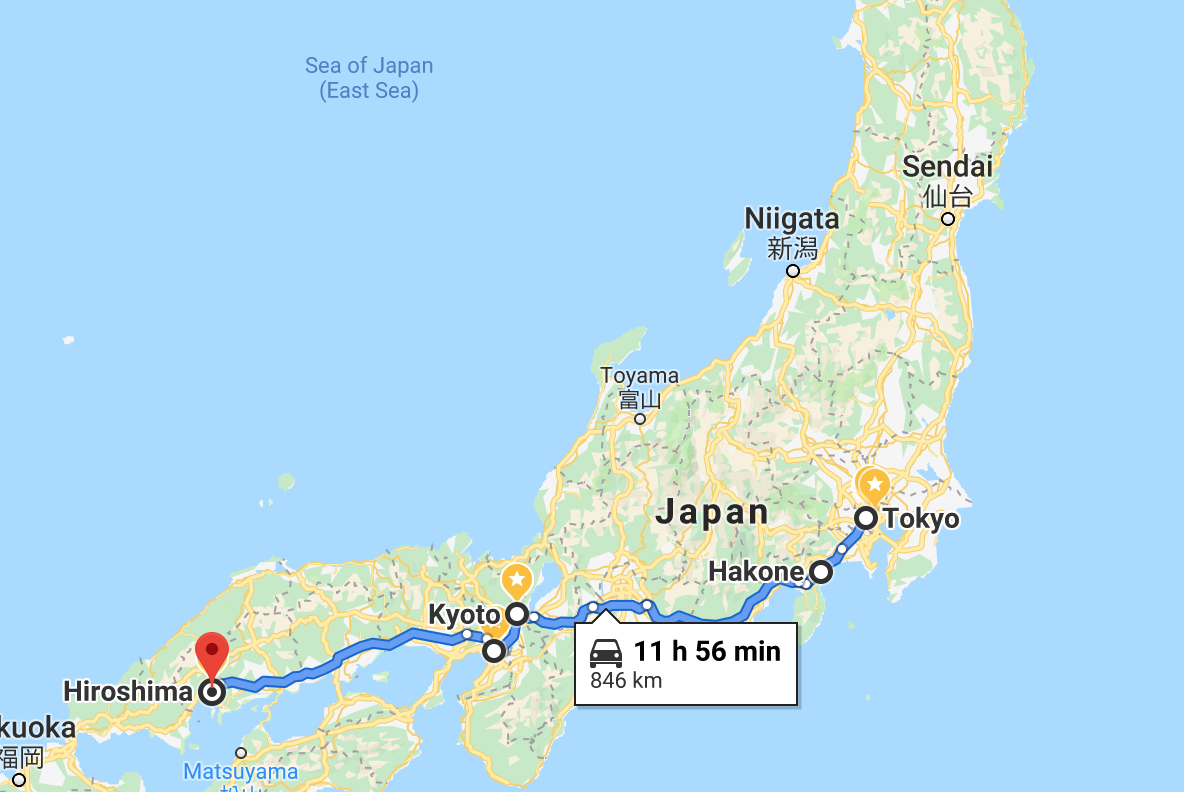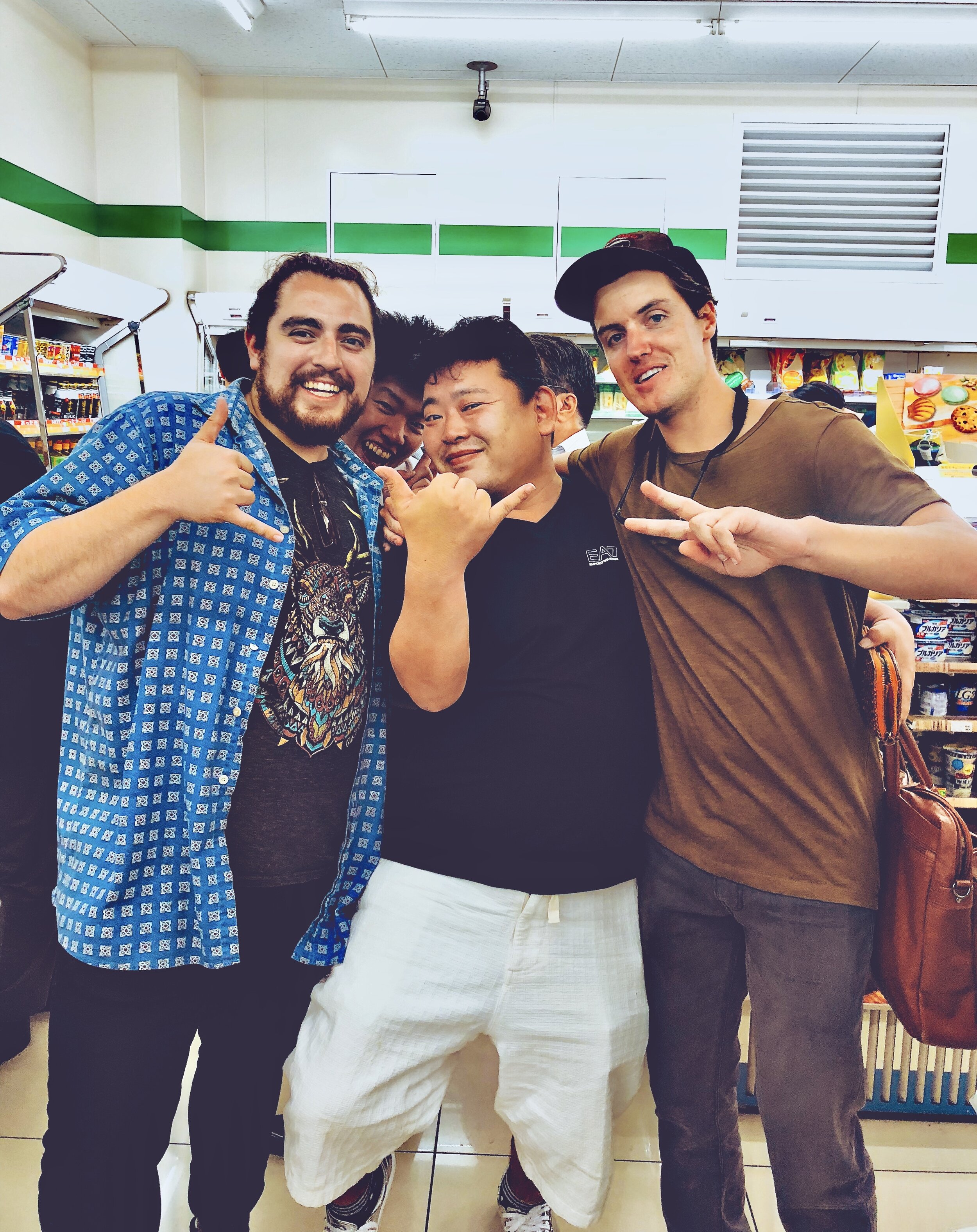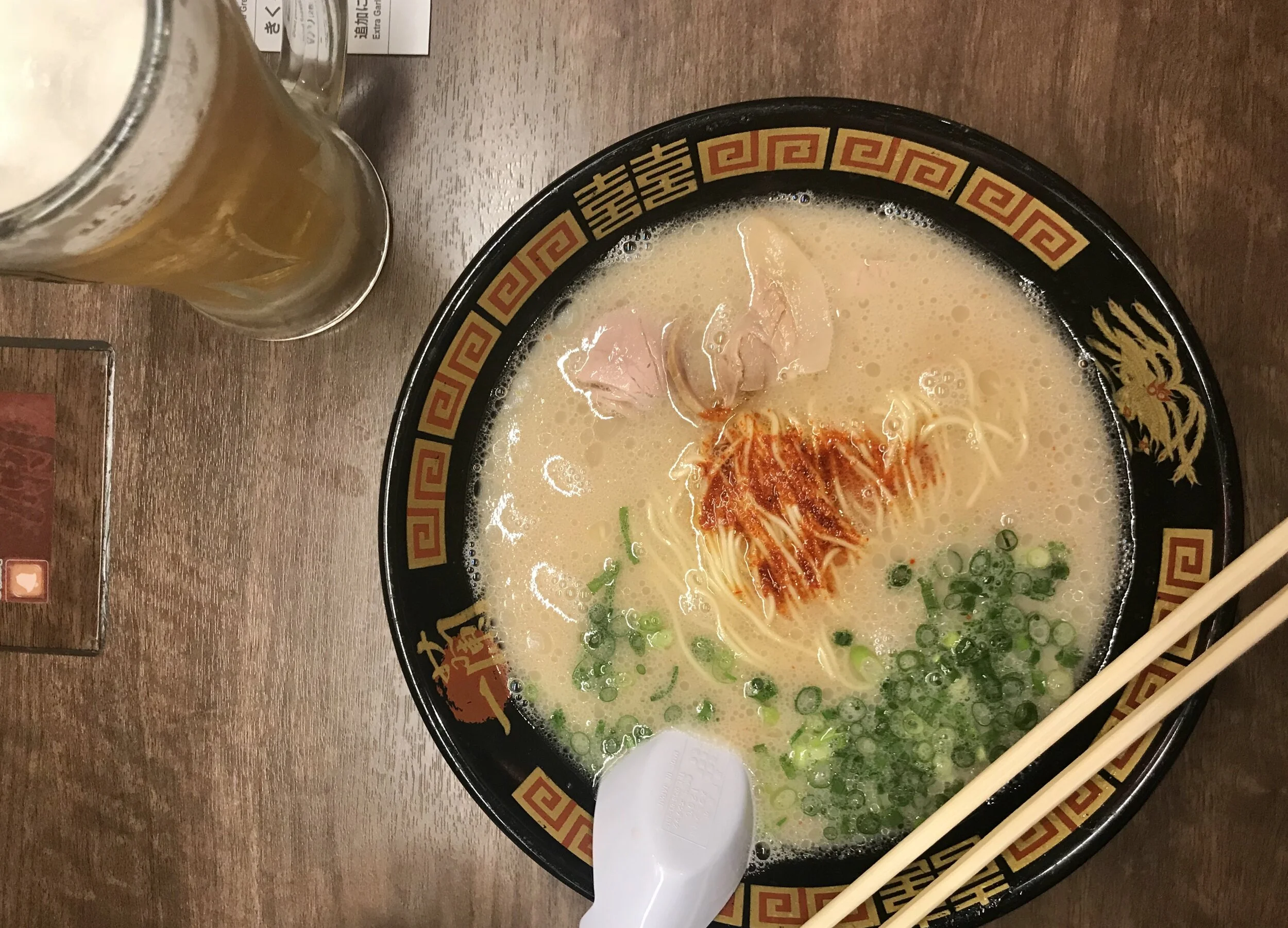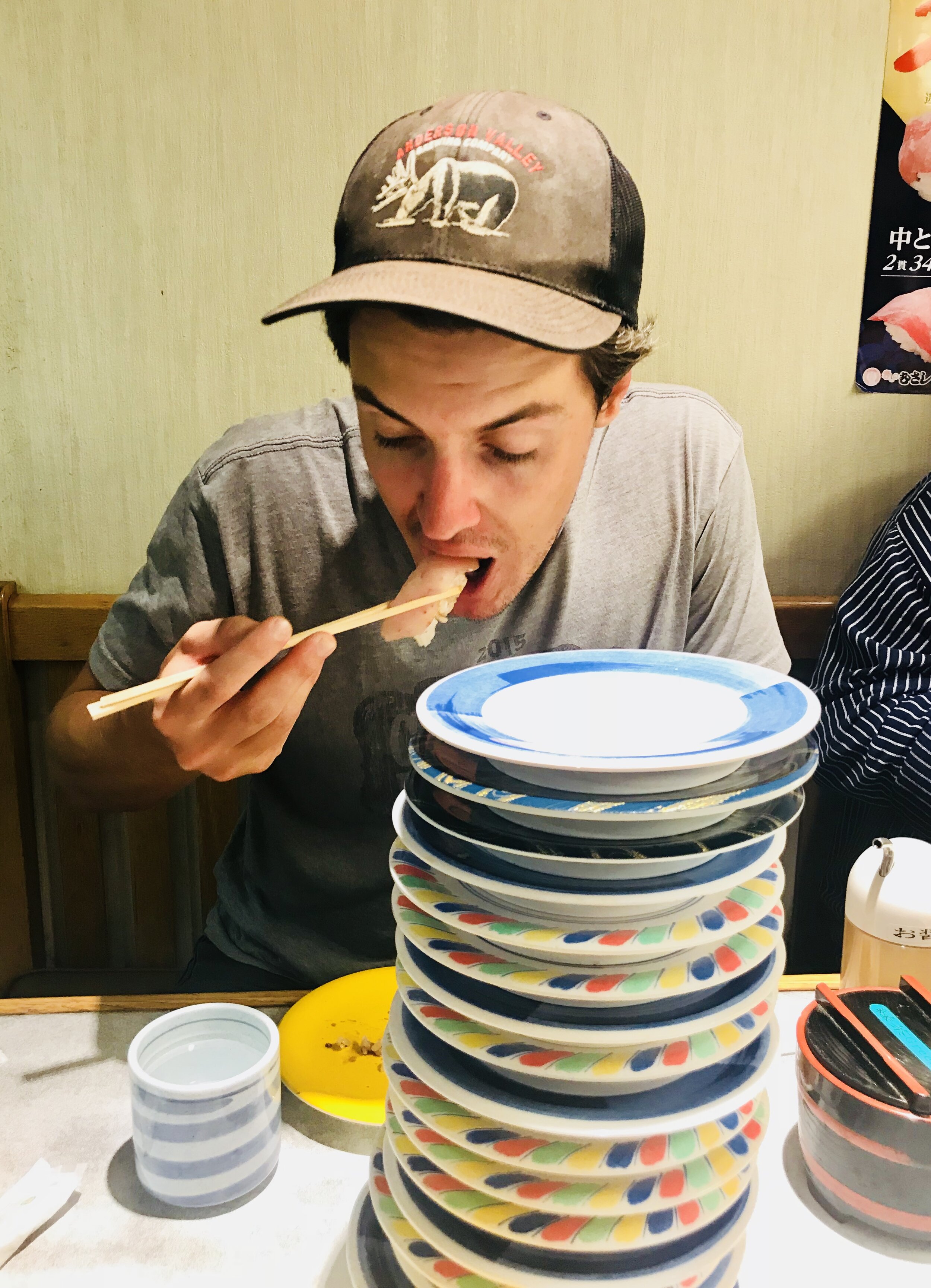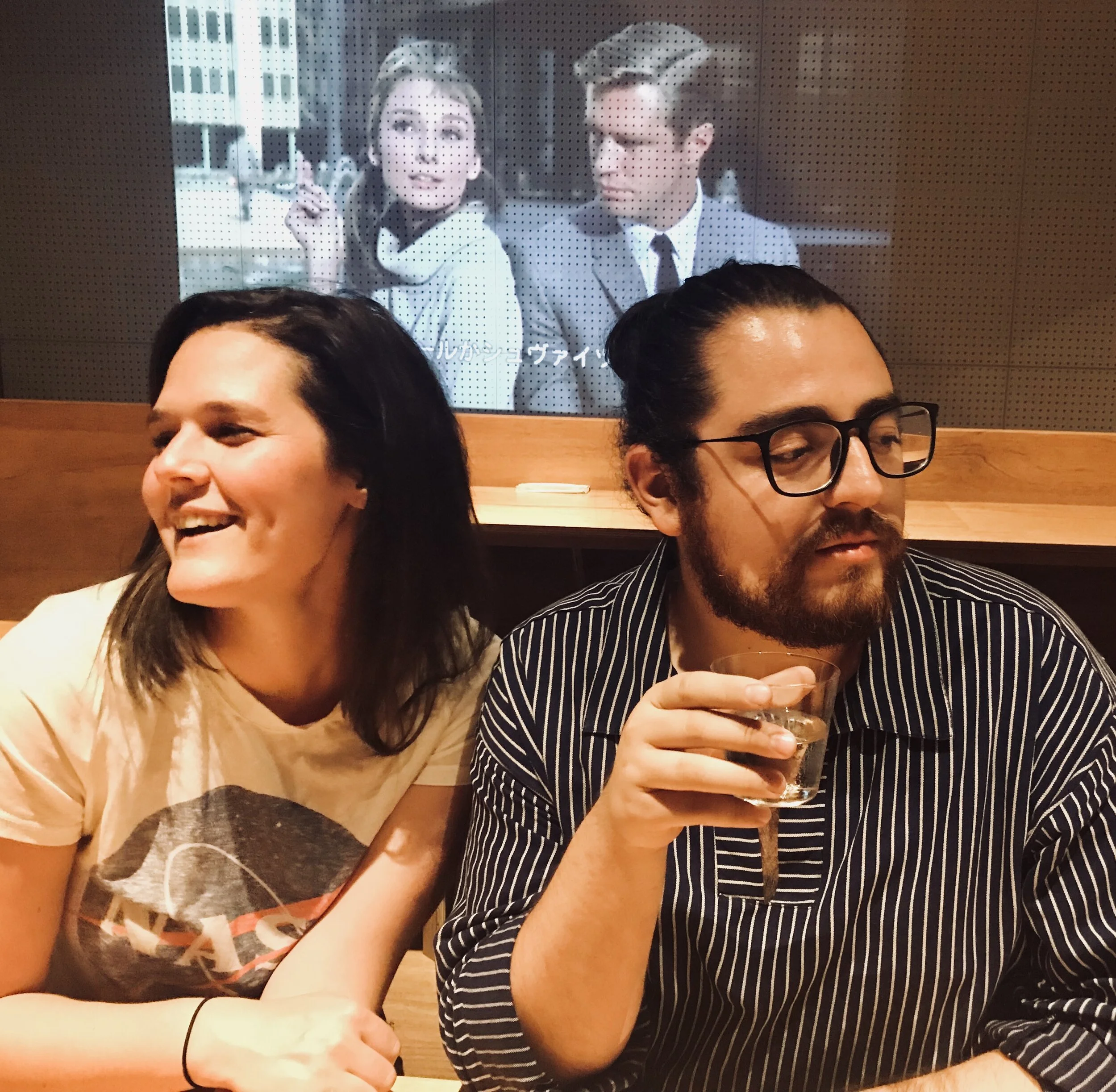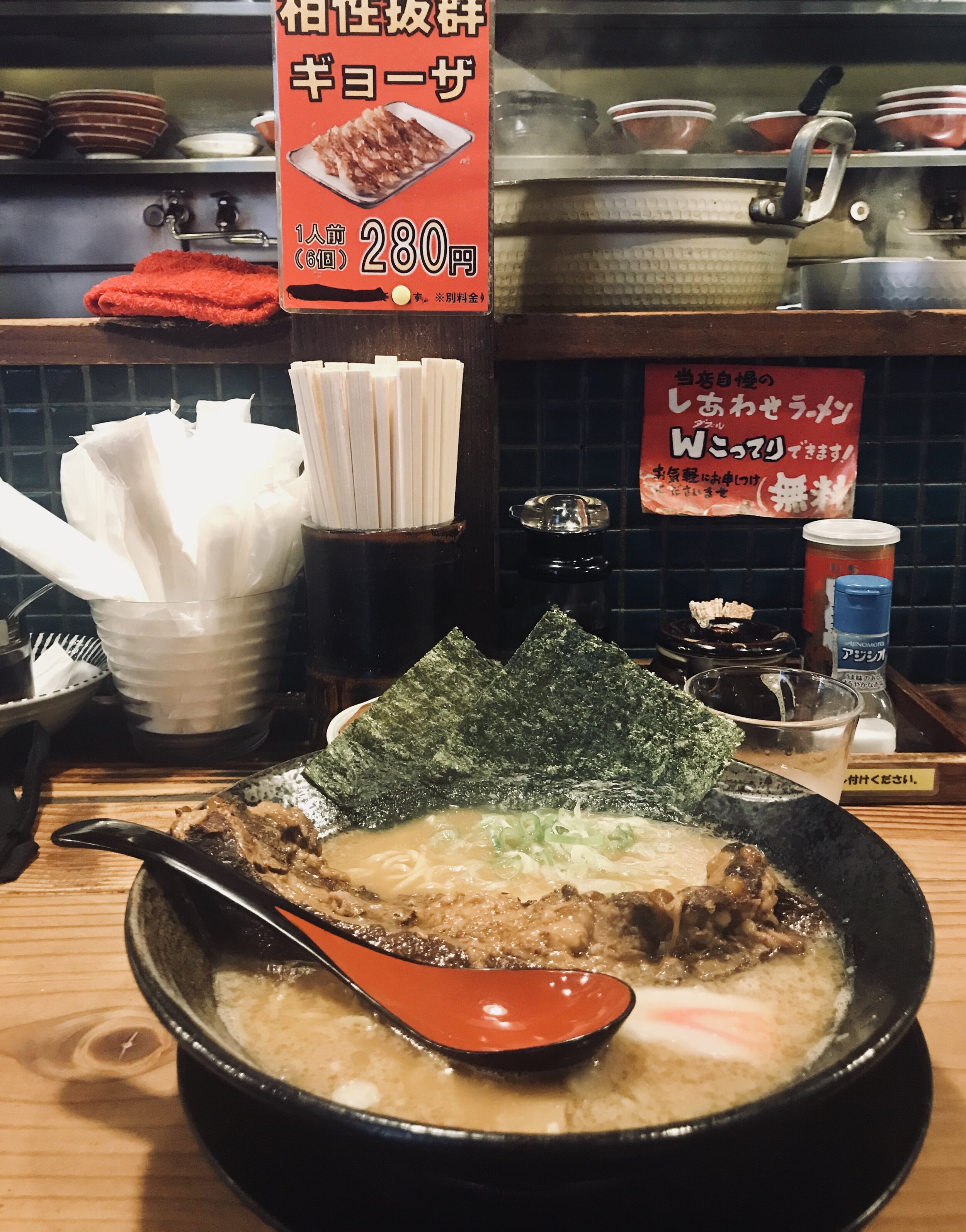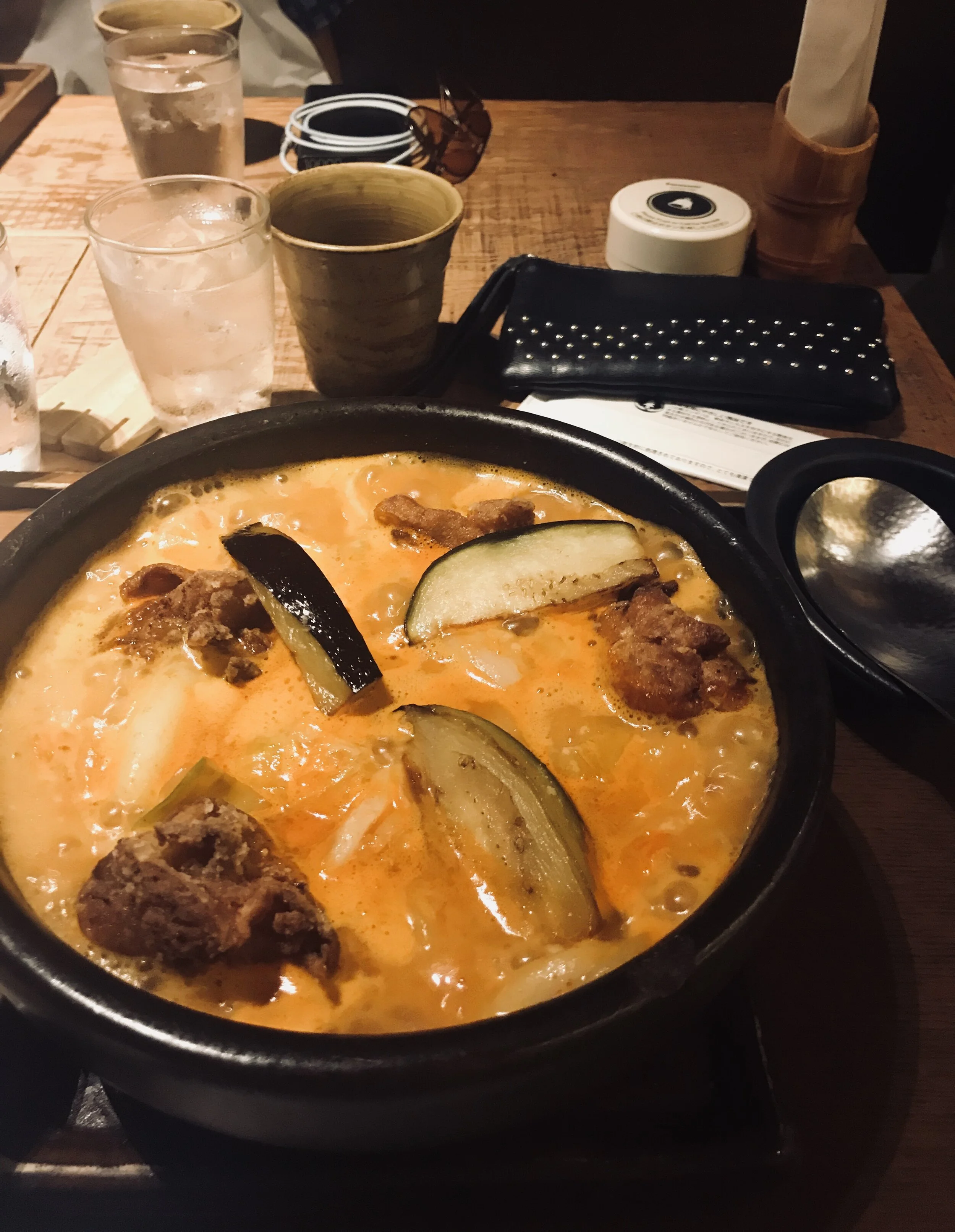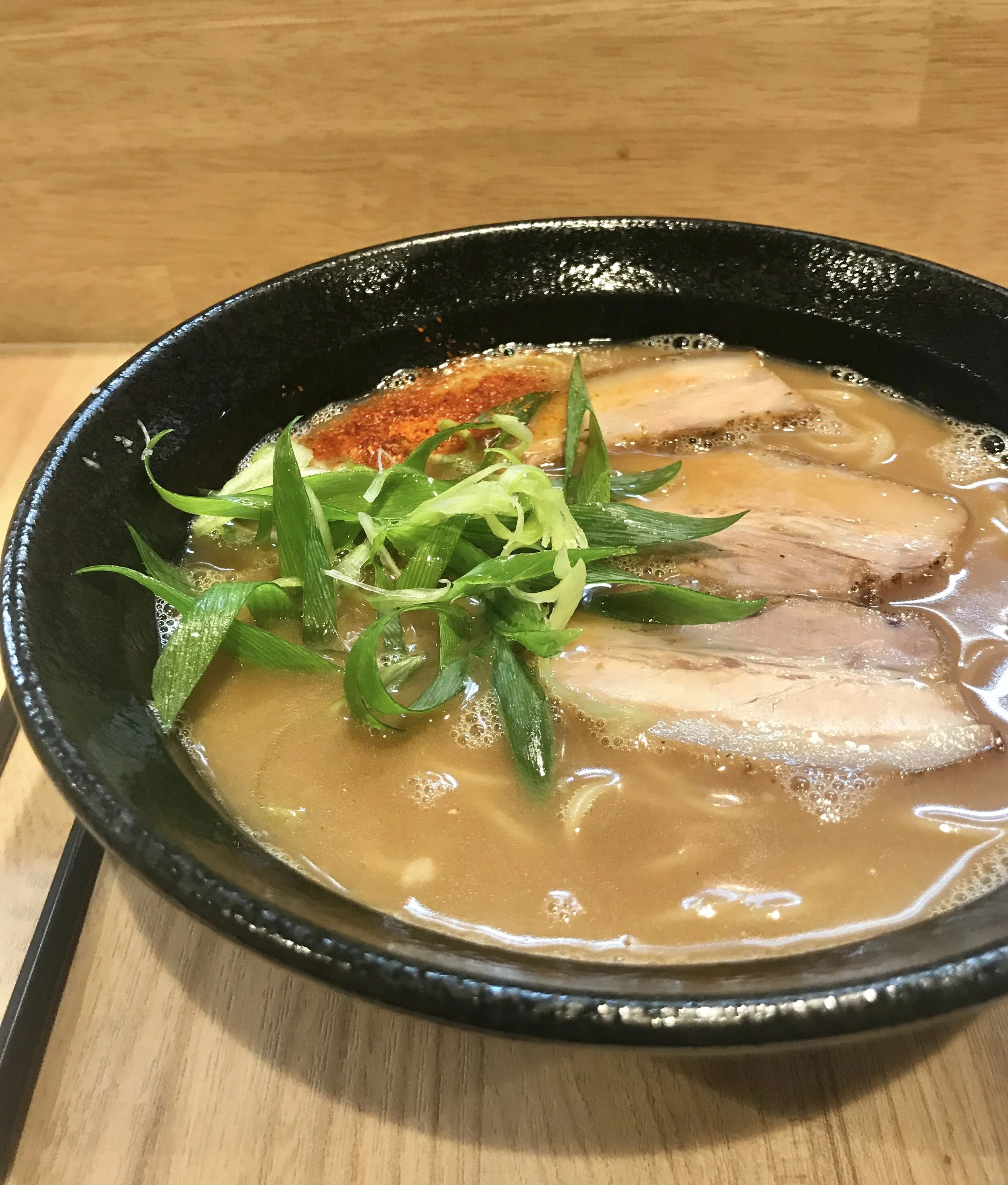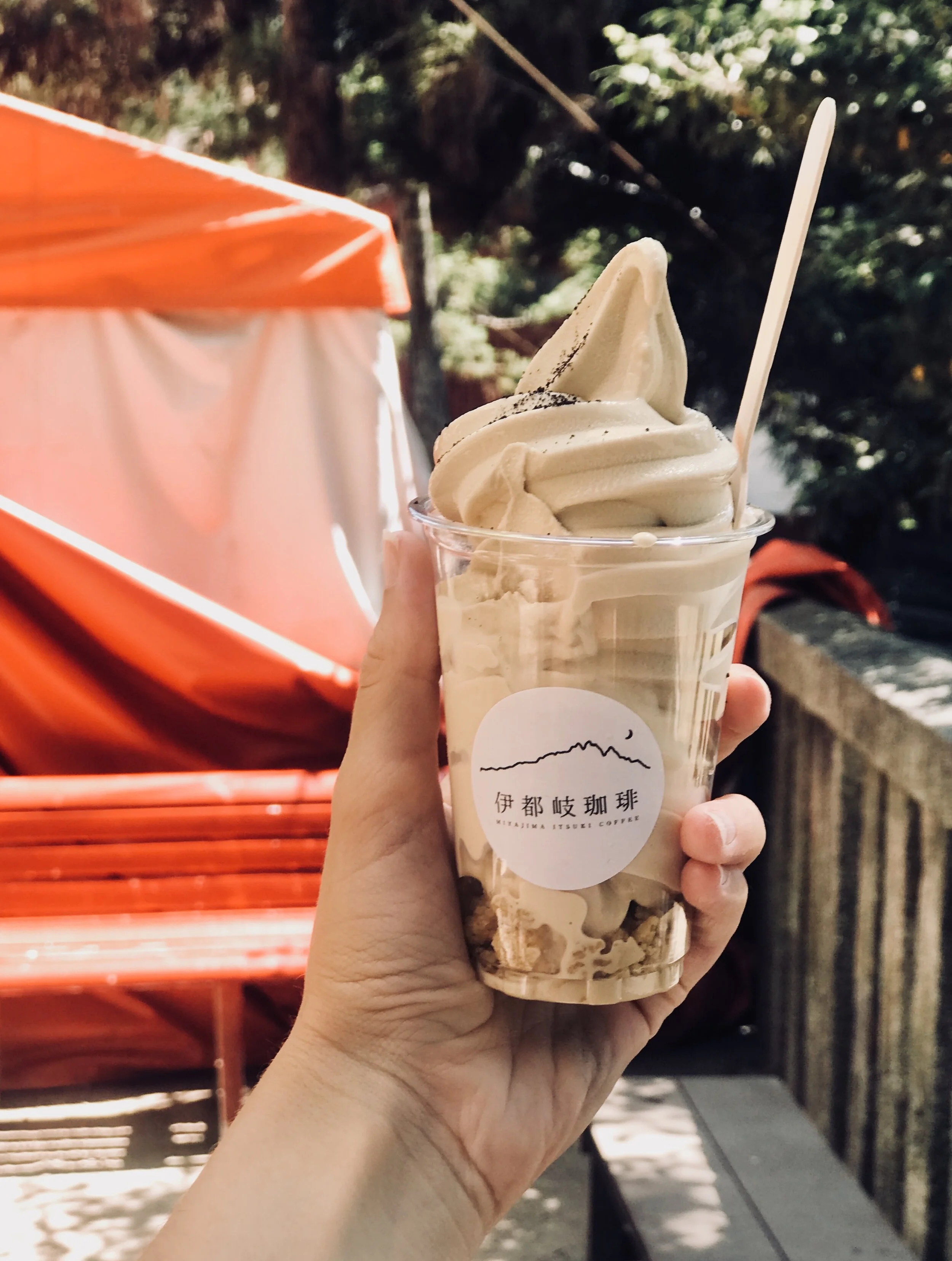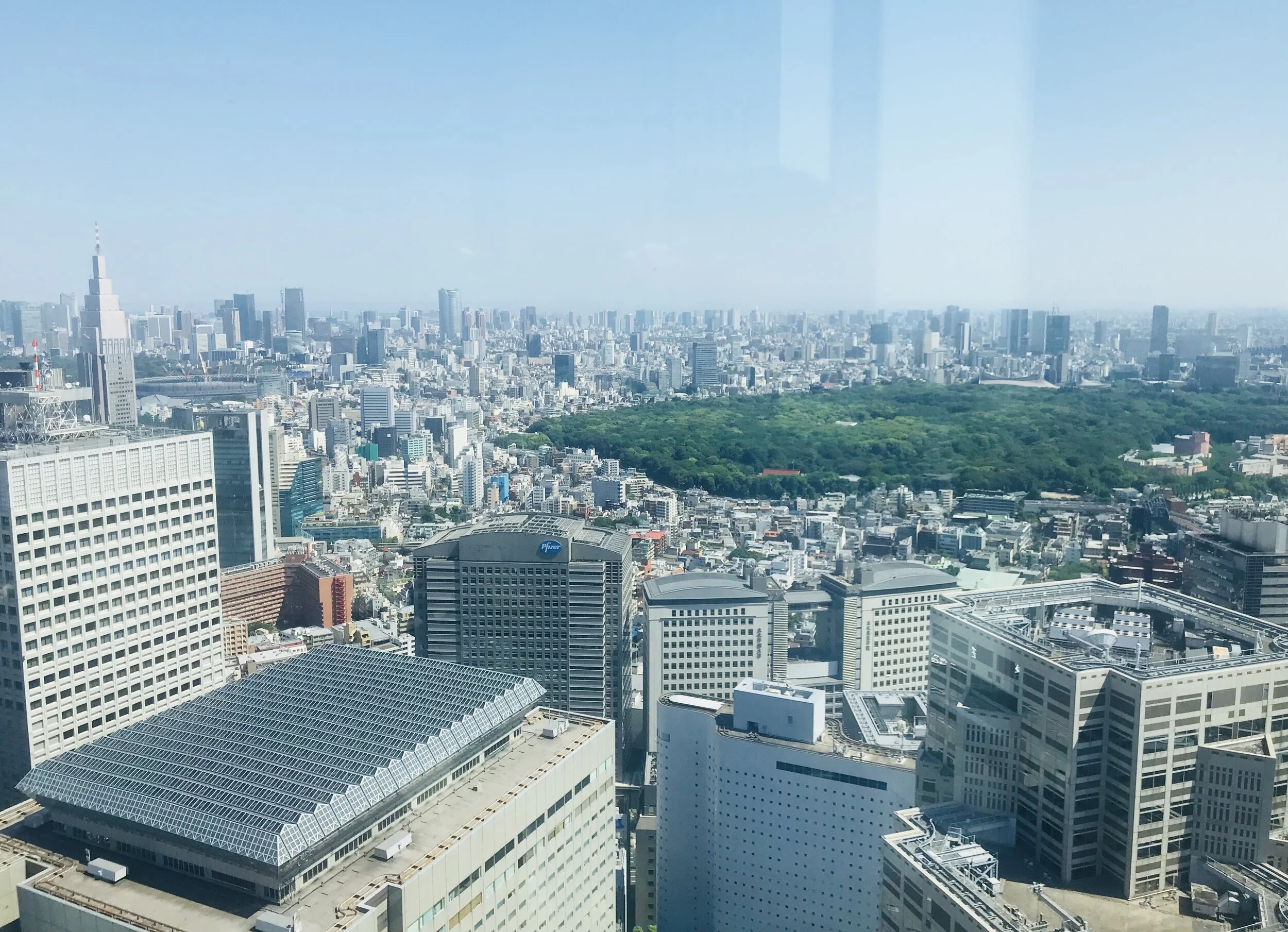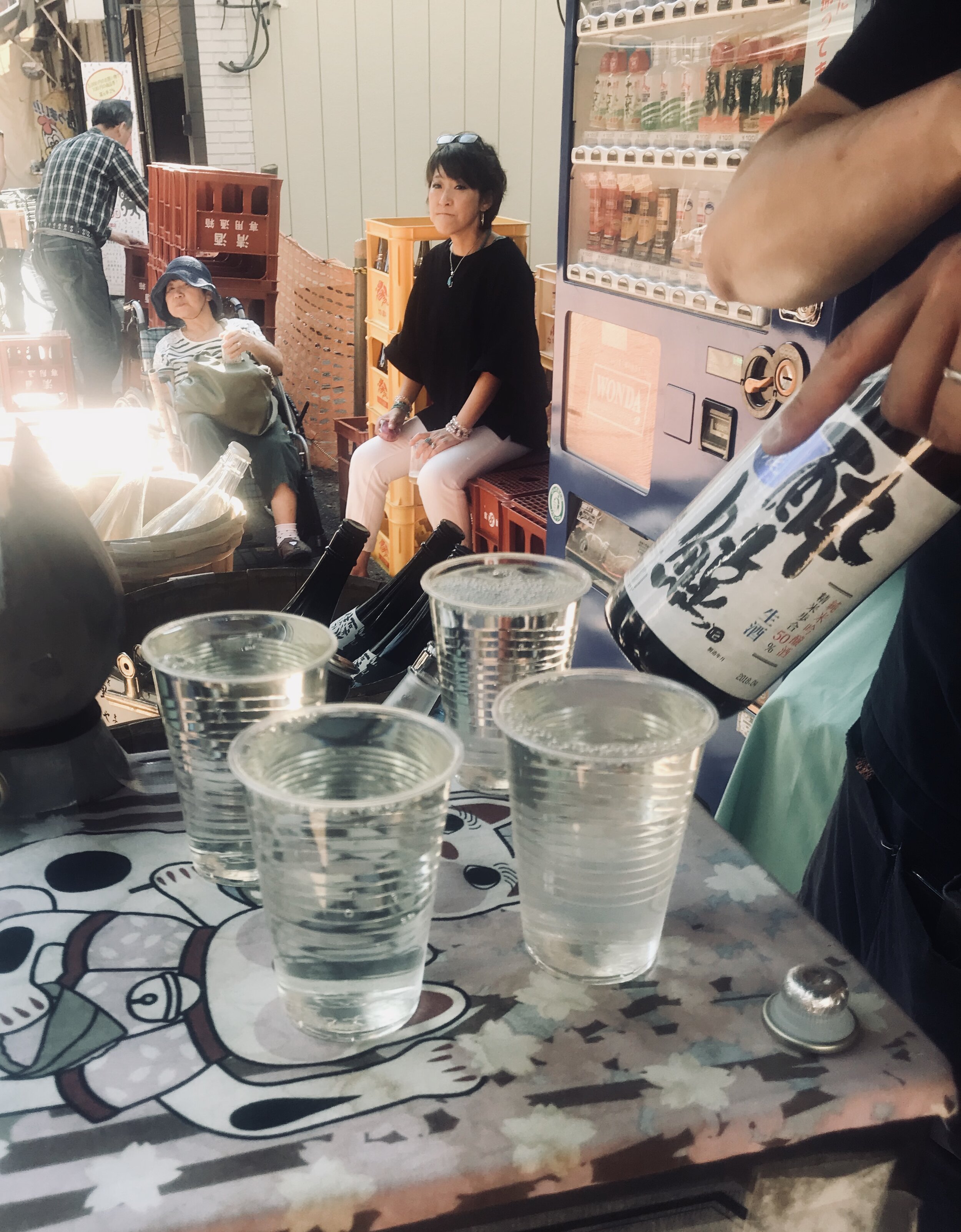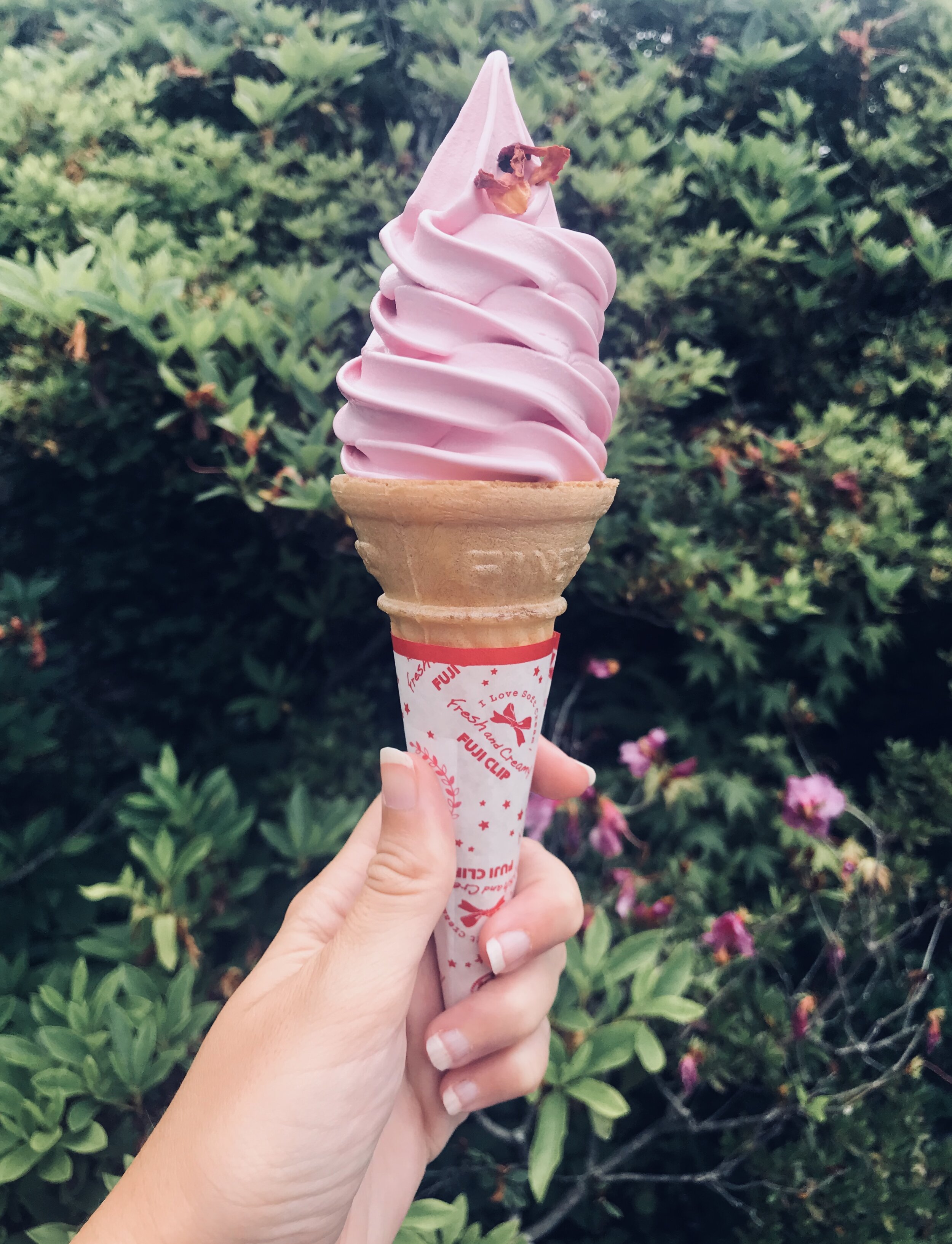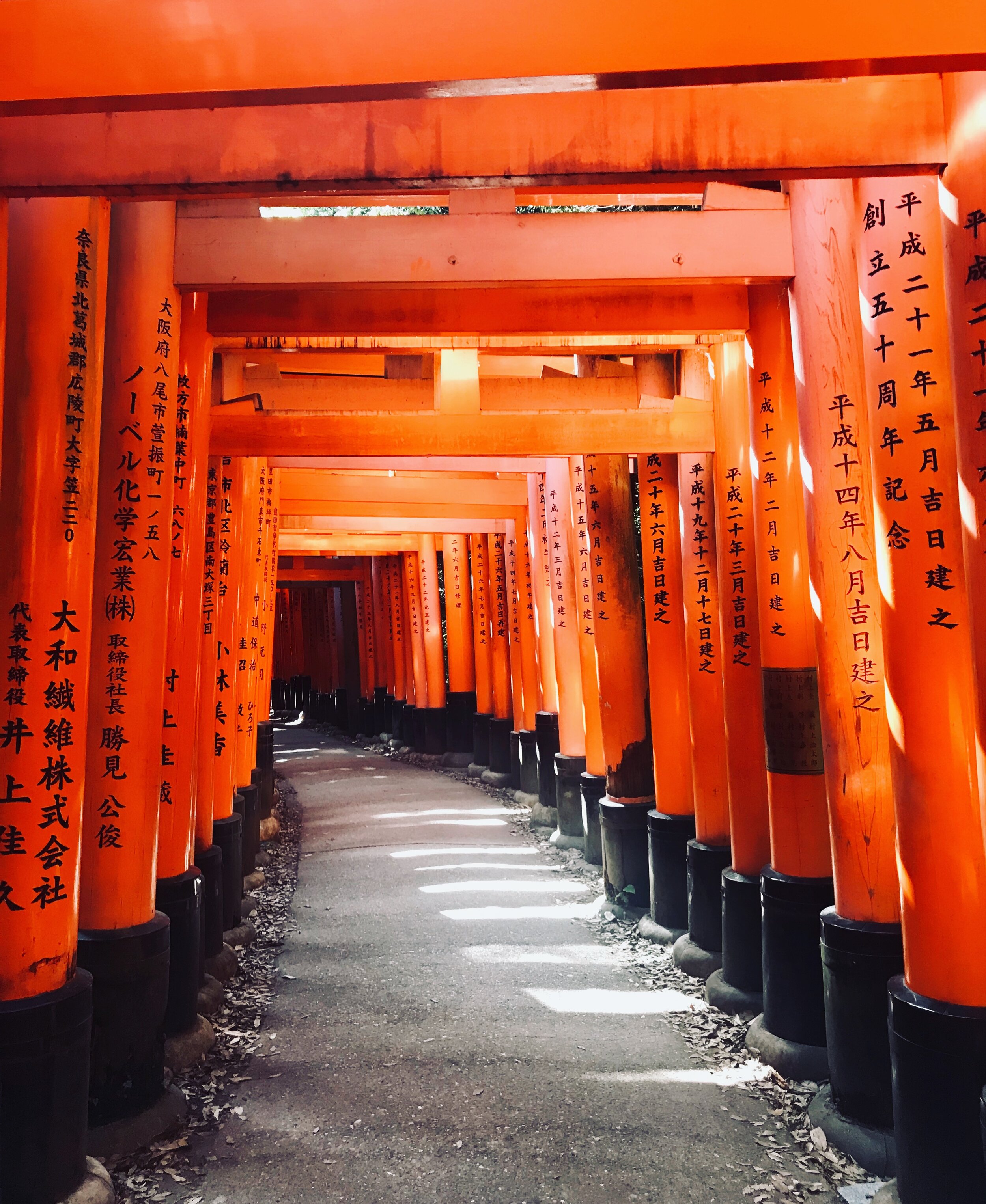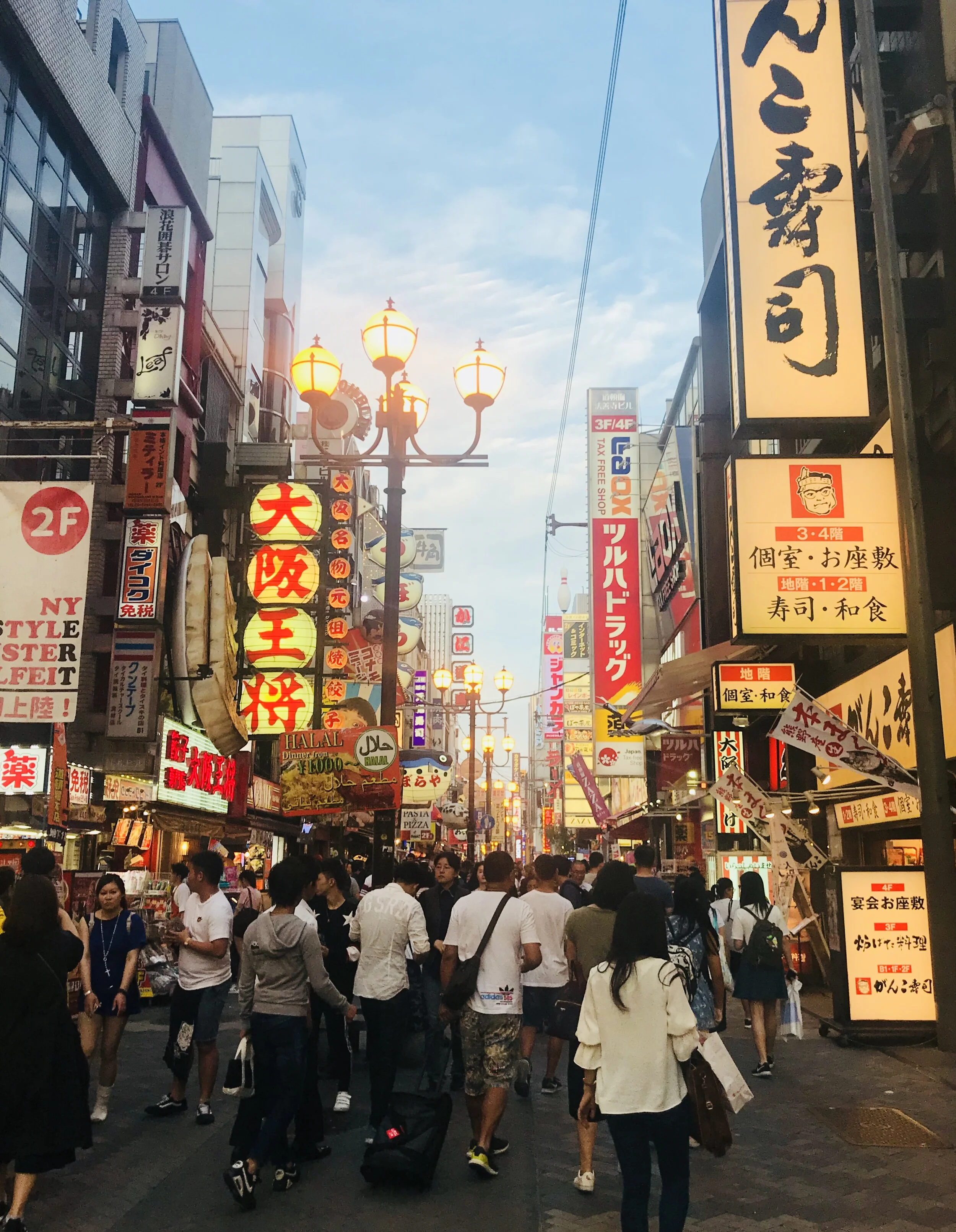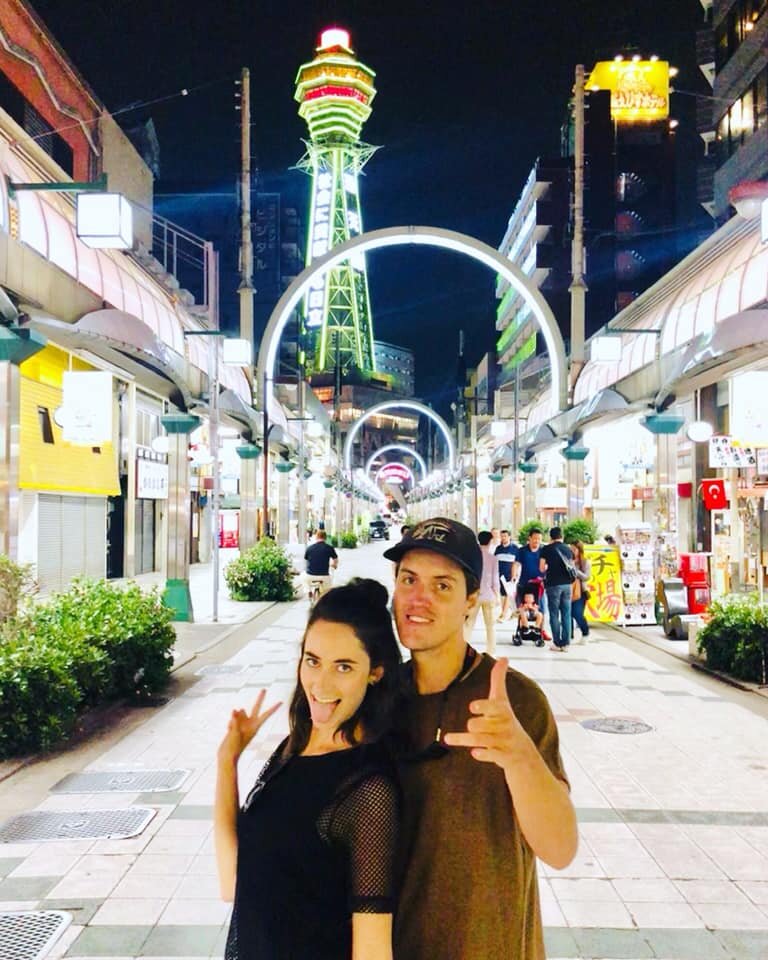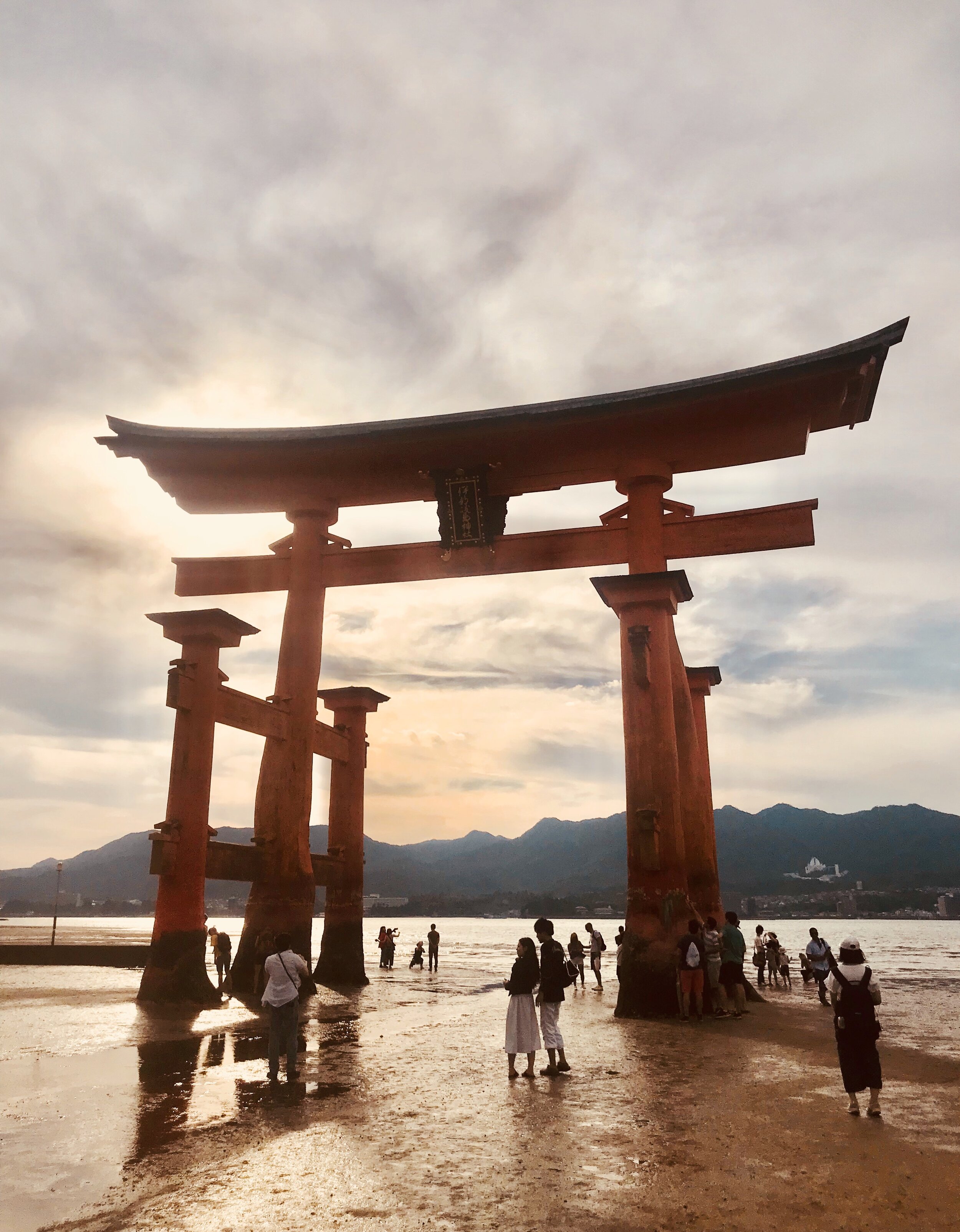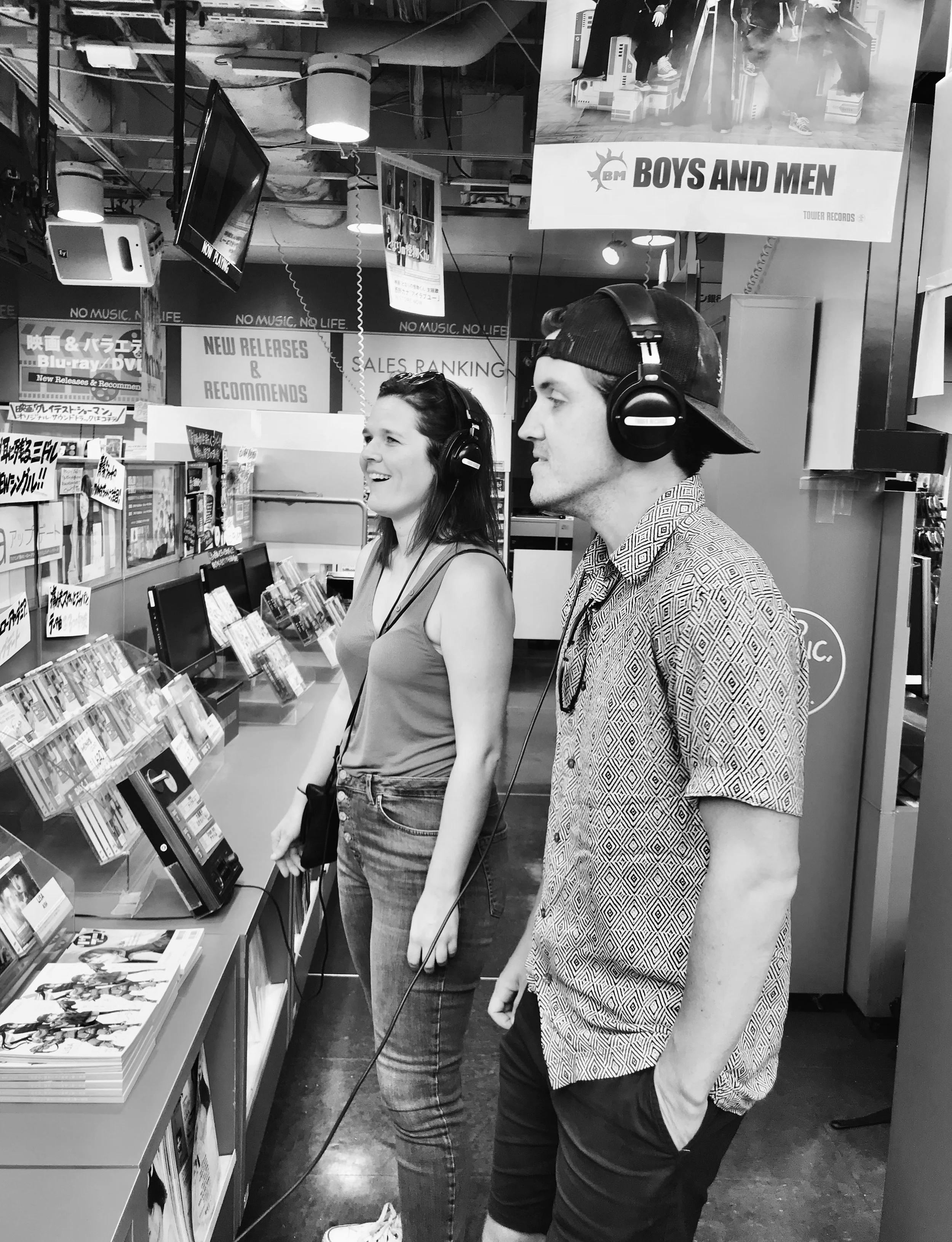Your Perfect 2-Week Trip to Japan
Japan was the last stop on our 3.5 month travel itinerary, and ended up being one of our favorite places we’ve ever been. The food was absolutely next level. The clean, bustling, efficient cities made us feel like we were in Disneyland (in only the best ways). The cultural experiences ranged from peaceful and spiritual to wild and weird as fuck. And unexpectedly, the people were the friendliest we’d encountered on any of our travels despite the biggest language barrier.
While we don’t get to travel 24/7 and don’t usually visit the same place twice, we’re already itching for a return trip to The Land of the Rising Sun.
We have soooo much to tell y’all about Japan, from our favorite dining experiences to whether you should get a rail pass or not to the weirdest things we encountered (aka sought out). For now, we hope you enjoy this 2-week Japan itinerary and use it to plan your own out-of-this-world Japanese adventure.
When we went: Late May. So yeah, for better or for worse, we just missed cherry blossom season. Regardless, May in Japan was beautiful with weather in the 70s (Fahrenheit) most of the time and some light rain.
What we listened to: Tokyo Nights playlist here.
Costs: Japan is notorious for being a pricey destination, but having just moved from San Francisco, our concept of expensive was tragically skewed. We were actually expecting much worse. Two of our best travel buddies joined us in Japan, which meant we could share (tiny) Airbnbs for a decent price. The food prices were comparable to San Francisco, but the quantity and quality you get is just unbeatable. Transportation was honestly our most unexpected expense in Japan — it can break your bank if you don’t go in with a plan! More on optimizing your transportation to come in a separate post.
Check out our video overview below, then use the table of contents to jump around and explore our favorite parts of Japan.
GETTING TO & AROUND JAPAN
In one of those hellish travel days you’re bound to have a couple times during an extended journey, we made the harrowing trip from Phnom Penh to Tokyo with a connecting flight in Kuala Lumpur and landed late at night. A late flight into Tokyo isn’t advisable because the subway lines from the airport were already closed, so we had to book a bus into the city. While the bus was super efficient, it didn’t get us very close to our Airbnb out in Suginami so we had to take a taxi, which are notoriously expensive as hell in Japan. #Regrets, but at that point we just had to suck it up and start our Tokyo adventure.
In each of the major cities, we used PASMO cards, which are available for purchase at the subway ticket machines and are easily reloadable with cash to take the subways and buses.
PRO TIP: Though the subway is extremely organized in Japan, it can get confusing because the different lines are privately owned. Google Maps makes it very clear which line to take from place to place, but at huge hubs like Shibuya station, you’ll need to closely watch the signs because different rail companies have different entrances all around the major intersection.
We mostly took trains from city to city, and we made a short flight from Hiroshima back to Tokyo to end our trip.
Our biggest stress before arriving in Japan was whether or not we should get a JR Rail Pass. We read countless overviews and ended up deciding that with the destinations we had in mind, the pass wasn’t worth the minimum $275 for one week or $440 for two weeks. We’ve dedicated a whole post to whether you should get the JR Rail Pass in Japan so you can make your own informed choice!
We spent four nights in Tokyo, one night in Hakone, three nights in Kyoto, three nights in Osaka, took a side trip to Seoul (separate post!), then flew back and spent three nights in Hiroshima and one last night in Tokyo before heading home to the U.S.
Our 2-week Japan itinerary: Tokyo > Hakone > Kyoto > Osaka > side trip to Seoul > Hiroshima > Tokyo > home.
WHERE TO STAY IN JAPAN
Hakone Shiunso
92 Tounosawa, Asigarashimogun, Hakone, Hakone, Japan 250-0315 | Agoda
In Hakone, we went with the traditional experience of staying at a Japanese ryokan (inn) with an onsen (hot spring) bathing area. It was an experience we’ll never forget and highly recommend doing if you have time while in Japan. It can be pricey, so all you really need is one night. At a traditional ryokan, you’ll wear yukata (robes) the whole time, sleep on tatami mats, bathe in hot springs, and enjoy traditional multi-course kaiseki meals. A once in a lifetime experience! We booked Hakone Shiunso through Agoda.
Robin’ it up. An unbeatable experience at a traditional ryokan with onsen.
Besides Hakone, we stayed in Airbnbs all throughout Japan and found them perfect for our group. Japanese homes are notoriously compact, so with four people we were often in tight quarters. Good thing we’re best travel buds! Accommodations in Japan can run on the pricey end, so splitting Airbnb apartments among a group was a great way to keep costs down.
Haven’t used Airbnb yet? Use our link for $40 off your first stay.
WHERE TO EAT & DRINK IN JAPAN
Not surprisingly, Japan had the best food we’ve ever experience in all of our travels, or at home for that matter. The variety of Japanese cuisine (sushi, ramen, udon, curry, katsu, yakitori...hell, even the convenience store food!) paired with the extremely high quality meant we never got bored and were always looking forward to our next meal. As per usual, we planned our entire days around foooood. 🤤
Tokyo
Tsukiji Fish Market
5 Chome-2-1 Tsukiji, Chuo City, Tōkyō-to 104-0045, Japan
A must in Tokyo! At the time of our visit, the 4am giant tuna auctions you may have heard about had been moved to a different location, so we didn’t go for that (not that we would have been able to wake up at that time anyway). We do highly recommend going in the morning to sample all of the best food vendors, but we didn’t show up that early or anything — probably around 10:30am. We had tamago (sweet egg omelette), yellowtail yakitori, tuna sashimi, and so much more. It was our first stop on our first day in Tokyo and it’s what made us instantly fall in love.
Ok droooool this fatty pile of tuna was under $10 USD. We were instantly obsessed.
Convenience Stores (FamilyMart, 7-11, Lawson)...yes, seriously
Unlike most convenience store chains in the U.S., those in Japan don’t skimp on quality while still offering quick and easy service. Faced with sometimes long and multi-leg train rides to our first chosen destination every morning, we would stop at a convenience store first thing every day to grab drinks and snacks to hold us over. Favorites included hundreds of varieties of bottled tea (including Sam’s favorite, milk teas), easy to-go iced coffee, onigiri (fresh rice balls with veggie or fish filling), tons of yummy packaged snacks, egg salad sandwiches, and fried chicken! Thanks to convenience stores on every corner, you’re never more than a couple blocks from fresh and delicious snacks in Japan.
Broing out with our new friends at an Osaka FamilyMart. The best food on the go and they’re a party after dark.
Golden Gai
Shinjuku, Tokyo
You’ve probably heard of the Japanese tiny bars, but man are these even tinier than we expected! Golden Gai is made up of six streets connected by little alleyways and all lined with tiny bars that only fit anywhere from a handful to 20 people. Most of the tiny bars charge a cover fee, so first we wandered until we found one that didn’t, and it happened to be one of the biggest ones (still only fit 20 people). Next we tried Albatross, which is accurately described on Google as an “intimate bar with a Gothic vibe, chandeliers & eclectic artifacts.” Each bar has its own little vibe or theme. Overall Golden Gai is a somewhat strange experience — sharing pricey drinks shoulder to shoulder with other patrons you just met in a crazily decorated tiny ass room. Definitely worth a try!
Fuglen
Tomigaya 1-16-11, Shibuya-ku, Tokyo, Japan
This one’s pretty random, y’all, but worth a mention. It’s a trendy Scandinavian-style coffee shop located in a quieter part of Shibuya. We happened upon Fuglen on a day when we’d skipped our morning convenience store run and were feeling hangry. Enter, the stylish vintage oasis that is Fuglen. Complete with a rich teakwood interior, Scandinavian mid-century furniture, and a spinning record machine, Fuglen was the perfect place to grab some delicious lattes and donuts before continuing on our way. We even stopped for a trendy photo shoot with some Korean tourists outside.
Gyukatsu Motomura
Japan, 〒150-0002 Tōkyō-to, Shibuya City, Shibuya, 3-chōme−18−10 2号館地下1階 大野ビル
As its name suggests, Gyukatsu Motomura is a katsu restaurant located in the heart of Shibuya. This isn’t your regular ol’ katsu though. No, no. At Gyukatsu Motomura, you grill your own high-quality beef cutlet on stone burners. This place is super popular with the lunch crowd, both locals and tourists, so we had to wait in line for almost an hour...each individually making our way through the line and into the restaurant’s tiny bathroom one at a time because post Fuglen donuts and coffee we all had to take a shit…but the food was well worth it. The lunch entrees are served with a side of soup, rice, cabbage slaw, tea, and sauces, and everything is so delicious — plus we’re always down for a fun interactive dining experience!
Um, yum.
Heart of Hearts Maid Cafe
Japan, 〒101-0021 Tōkyō-to, Chiyoda City, Sotokanda, 4-chōme−6−2 いすゞビル 7F
One strange ass afternoon. Maid cafes really aren’t about the food or drinks, so see the Experiences section below for the full rundown.
Kagaya
Japan, 〒105-0004 Tōkyō-to, Minato City, Shinbashi, 2-chōme−15−12 花定ビルB1
Oh, Kagaya. Never in our lives will we have another dining experience like this one...and I don’t know that we would want to. Before heading to Tokyo, we asked a friend who lives there if he could recommend any “weird” experiences, and Kagaya was his suggestion. We knew we had to go and made a reservation right away. At its core, Kagaya is a small izakaya serving homestyle Japanese fare. What makes it truly unique is the owner, Mark Kagaya. He’s seemingly insane, and does everything in his power to ensure that no part of your dining experience verges on the normal. The menus are written in crayon and rather than listing any food or drinks, they feature poetic verses that you’re required to sing to Kagaya to submit your order. He puts on a whole act with a stuffed bear when bringing out the drinks. He serves the food to each table in choreographed dances and skits modeled after different countries. He makes everything incredibly sexual. And all the while, an older woman does the cooking in the back, gazing on stone-faced no matter how many antics are going on up front...which is perhaps the funniest part.
Murugi
2-chōme-19-2 Dōgenzaka, Shibuya City, Tōkyō-to 150-0043, Japan
Curry wasn’t necessarily the first thing that came to mind when we thought about Japanese food, but Japanese is its own special wonder not to be missed! Murugi made a quick and delicious lunch stop right in Shibuya, serving up simple and hearty plates of chicken curry topped with egg alongside rice.
Udon Yamacho
Japan, 〒150-0013 Tōkyō-to, Shibuya City, Ebisu, 1-chōme−1−5 エビスオークビル 1F
Udon Yamacho in Ebisu came along after our afternoon in Yanaka (see below) when we were feeling tipsy and ready for food and more drinks. Before we went to Japan, the udon could never hold a candle to the thought of a spicy bowl of ramen for us, but apparently that’s because we hadn’t tried udon in Japan yet. This place ended up being one of our favorite meals. Specialties include duck udon, curry udon, tempura udon and more. Everything we tried was delicious.
Bar Tram
Japan, 〒150-0021 Tōkyō-to, Shibuya City, Ebisunishi, 1-chōme−7−13 スイングビル
Absinthe bar in Ebisu right near Udon Yamacho. It’s dark and hip with a speakeasy sorta vibe, with delicious absinthe cocktails and even absinthe on tap if you dare.
We take absinthe drips very seriously around here, folks. #dripdropdiet
Music Bar ROCKAHOLIC-Shimokitazawa
2 Chome-6-5 Kitazawa, Setagaya City, Tokyo 155-0031, Japan
We ended up at this bar pretty randomly but had an amazing time. They were blasting angsty Japanese music videos and throwing in hits from the U.S. every couple songs or so — think Blink-182, Sum 41, Good Charlotte, and the like...what we like to label as “angsty teen” rock, but like, in the best way. Like a lot of music / record themed bars in Tokyo, they had cards on the table where you could submit song requests. As you can imagine we submitted dozens...some got played, some didn’t, but we danced the night away with really drunk Japanese teenagers nonetheless.
Rawr.
Kyoto
Ichiran
Japan, 〒604-8041 Kyoto, Nakagyo Ward, Uraderacho, 598 新京極東入
You’ve most likely heard about the famed chain, where every ramen enthusiast is placed into a “flavor concentration booth” to truly appreciate the hearty, spicy soup to the fullest. Ichiran takes away any need to interact with other humans. You order via vending machine, pass your card through curtains to the chefs, and then your steaming bowl appears magically before your eyes — you can just slightly see the server bow behind the curtain to wish you the best in your ramen-savoring adventure. Despite being a chain, Ichiran was actually one of our favorite bowls of ramen in Japan. Everything from the spiciness to the noodle texture to the richness of the broth are customizable, resulting in pretty much your perfectly customized bowl of goodness. We went back in Tokyo for our last meal in Japan!
We literally crave this every day. You don’t know how difficult it is to even view this photo. You’re welcome.
Sake Bar Yoramu
Japan, 〒604-0831 Kyoto, Nakagyo Ward, 二条通東洞院東入ル松屋町35−1
We wanted a legit sake bar and found this place near us on the map, but when we walked in we were immediately a little intimidated. It’s small and silent with just a few chairs lined up at the bar, and only one other customer was in there when we arrived. If you read the reviews, most of them mention the owner / bartender because he’s quite the character. Half of the visitors love him, and the other half hate him. He takes the time to really talk to each customer, asking endless questions to try and tailor his sake recommendations to your tastes, but he can come off rather condescending. After trying several types of sake, we were terrified at the thought of the bill we might be running up. The owner then launched into a diatribe about how sake is underappreciated and thus inexpensive. Bless up! Sake flights were only around $10-$15 per person! Would only recommend this place if you’re down for a quiet, serious, somewhat intense sake tasting experience.
Beer Pub Takumiya
Japan, 〒604-0836 Kyoto, Nakagyo Ward, 押小路東洞院西入ル船屋町400-1
Our favorite place to grab a brew in Kyoto (and probably all of Japan)! The craft beers were delicious, the post-work and late-night crowds are fun, and the bartenders were so hilarious and friendly. They basically poked fun at us (and maybe flirted with us?) the entire time — we ended up going twice! We didn’t get a chance to try their food but it looked amazing as well.
This is what we’re talking about when we say Japan was the friendliest place we’ve ever been. People willing to wear the tiny hands that we for some reason bring around the world with us and goof off with us the entire time. We found our humans!
Nishiki Warai
Japan, 〒604-8142 Kyoto, Nakagyō-ku, Nishiuoyachō, 597 ミズコートビル 1F
Along with all the food stalls lining Nishiki Market, there are also some amazing restaurants to duck into. We wanted to try okonomiyaki (savory japanese pancakes cooked on a tabletop grill), and chose this place for lunch. This was our first and only time eating okonomiyaki so far, so we have no clue how this place compares to others, but we found it pretty delicious.
Kyoto Station’s “Ramen Street”
Higashishiokoji Kamadonocho, Shimogyo Ward, Kyoto, Japan
Kyoto Station is a beautiful architectural feat in itself, and we were excited to find that beyond serving your transportation needs, the 10th and 11th floors are dedicated to some delicious dining options. We opted for the ramen “theme park” on the 10th floor, a small food court with eight shops serving different varieties of ramen from all around Japan. We chose a spicy tantanmen ramen stall and it was one of our most unique bowls of ramen during the trip.
Hyunnnnnghhh
Musashi Sushi
Japan, 〒604-8005 Kyoto, Nakagyo Ward, 河原町三条上ル恵比須町440
Our first time doing conveyor belt sushi! We’ve done it again since, but nothing compares to the quality you get in Japan. Everything available on the conveyor is of the utmost highest standards. We felt like kids in a candy store watching it all roll by on the conveyor belt, grabbing for anything we wanted and stacking our empty plates up high. At conveyor belt sushi restaurants, the prices are shown by the color of the plate, so you can easily keep track of how much you’ve spent and then tally it all up at the end. We only ended up spending around $15 per person for one of the yummiest, most fun dining experiences ever!
Chowing the fuck down. Look at that stack.
Before 9
Japan, 〒604-0845 Kyoto, Nakagyo Ward, 烏丸御池上ル二条殿町545
Stopped at this bar for a nightcap on the way home one evening and it was delightful. It was beautifully designed with a limited but great selection of craft beers and sake. We sat upstairs, and they were playing Breakfast at Tiffany’s on a giant projector screen that took up the whole wall. V aesthetic.
And I said what about Breakfast at Tiffany’s and she said I think I remember the film and as I recall I think we both kinda liked it and I said well that’s the one thing we GOT!
Osaka
Hanamaruken Namba Hozenji
1-chōme-2-1 Nanba, Chūō-ku, Osaka, 542-0076, Japan
Sometimes, when in Japan (or not), it’s acceptable to enjoy a steaming bowl of ramen for breakfast. And that’s just what we did at Hanamaruken, where we ended up on recommendation from a friend. The short-rib ramen was one of our favorite bowls of the trip. Drooling right now just thinking about it.
Guhhhhhh
Sake No Ana
2-chōme-4-21 Ebisuhigashi, Naniwa-ku, Osaka, 556-0002, Japan
Usually when we travel we’re armed with an intensely-researched list of places we want to eat and drink. Well, our experience at Sake No Ana just goes to show the importance of abandoning your list every once in a while and giving over to intuition. While wandering through Osaka’s Shinsekai neighborhood, we happened upon this small local izakaya that seemed to be bustling with the after-work crowd and decided to venture in. It had one small semicircular counter surrounded by stools, like a diner style. This place clearly wasn’t frequented by tourists, but as we found almost everywhere in Japan, everyone was thrilled to see us there. An older couple bought us soup just so we could try a homestyle favorite. Other patrons bought us rounds of sake and beer. We got into an hours-long conversation with a group of three guys despite barely speaking the same language, with topics ranging from the normal to the extremely strange...like Yakuza dick piercings. Probably the most fun place we stopped for drinks in all of Japan.
Our new buddies and us. Topics ranged from comparing beer guts to Yakuza dick piercings, miraculously while barely speaking the same language.
Tsurutontan Soemoncho
3-17 Souemonchō, Chūō-ku, Osaka, 542-0084, Japan
Post Sake No Ana, we were all feeling pretty tipsy and ready for some food so we headed back to Dotonbori for udon. I think we just chose a place off the map. It ended up being an underground udon restaurant that looked really nice inside, and the udon hit the spot. We honestly kind of blacked out the meal, but a couple of us ordered the special cheesy udon, fried chicken, and Japanese eggplant. It sounded weird at first (cheese is literally unheard of in Japanese, and most Asian, cuisine), but tasted fuckin bomb...at least to our drunk asses.
Are you getting sick of photos of soup yet? 😜
Hiroshima
Gariber
4-1 Hondōri, Naka-ku, Hiroshima, 730-0035, Japan
The best Japanese curry we’ve ever had, hands down. This is a tiny one-counter restaurant in downtown Hiroshima, where every batch of rich curry and perfect, fluffy rice is made to order.
Sushitei Hikarimachi
1 Chome-11-13 Hikarimachi, Higashi Ward, Hiroshima, 732-0052, Japan
A traditional sushi counter where we got a delicious sampling of sushi, sashimi, sake, and beer. You really can’t go wrong with sushi in Japan, but this is one of the best-rated in Hiroshima and we loved it.
らーめん両さん
8-5 Minamitakeyachō, Naka-ku, Hiroshima, 730-0049, Japan
It’s always fun when the place doesn’t have an English name so you have to walk around comparing what you see on Google Maps with the signs on the building. God forbid it’s in a slightly different font and then you’re screwed! We found this one on a list of best ramen spots in Hiroshima and it did not let us down. The owner / chef didn’t speak English but handed us English menus and very kindly tried to explain that it was all tonkotsu ramen, the only choice was between broth that also had ginger in it or garlic in it. We each ordered one of the options and they were both amazing. Probably the most simple and comforting bowl of ramen during our trip, and the ginger and garlic broths are unlike anything we’ve tried elsewhere.
Too bad — the ramen pics never end!
Coco Ichibanya
2-chōme-3-21 Higashisendamachi, Naka-ku, Hiroshima, 730-0053, Japan
This is a curry chain all throughout Japan and other Asian countries, but it’s worth a mention because it’s so bomb! Everything is customizable from the rice portion to the toppings to the spice level of the curry sauce. The menu is ginormous but Ray’s go-to was the pork cutlet curry and Sam’s was this fried chicken breast curry with veggies.
Switching it up from soup pics. Here’s a curry pic.
Miyajima Island
Miyajima Island is known for several specific snacks, including all different varieties of oyster specialty (we tried grilled oysters and oyster curry puffs), momiji manju (filled steam buns in the shape of maple leaves, which sadly we did not try) and ice monaka (wafers filled with ice cream and toppings). We also tried coffee soft serve, beef yakitori, and grilled corn on the cob from the various food stands there. Just watch out for the deer who will try to steal snacks out of your hands while you’re not looking!
One of our fave snacks on Miyajima Island that day — coffee soft serve.
WHAT TO DO IN JAPAN
All of our Japanese sights, experiences and activities broken down by city!
Tokyo
Tsukiji Market: A must in Tokyo! See food & drink section above for the full rundown.
Hamarikyu Gardens: We wouldn’t necessarily recommend this garden over all others, and simply chose it because it’s near Tsukiji, but Japan is known for its serene gardens so it’s worth adding at least one to your itinerary. It wasn’t a particularly special bloom season when we went, but we did enjoy stopping at a tea house on the lake in Hamarikyu for delicious matcha and desserts.
Quick tea stop at the gardens.
Harajuku: Worth seeing, but we went midday and it was just a super crowded street packed with tourists. We enjoyed browsing some of the crazy costume shops and stopping for drinks, but some of the popular restaurants we tried to go to in the area had lines around the block so we didn’t spend a ton of time there.
A taste of Harajuku.
Shibuya (Shibuya Crossing, Shibuya 109, and Purikura photo booths): If you visit Tokyo, you won’t miss Shibuya. Shibuya Crossing, one of the busiest scramble intersections in the world, is like Tokyo’s pulsing heart. Also worth checking out is the iconic Shibuya 109 department store, known for the cutting edge styles that mark Tokyo’s fashion culture. We loved browsing the cute clothes, t-shirts with weird nonsensical English phrases on them, and our favorite part was the traditional Purikura photo booth we found there! These photo booths are absolutely other-worldly, dude. After taking photos with your friends, you can then edit every aspect of your face and makeup, basically transforming yourself into an anime character. Then come the extra photo designs — backgrounds, colors, patterns, stickers, type, etc. And then you print and get to keep your adorable (read: terrifying?) photos 4evr!
We look totes norms right?
Golden Gai: The famous (infamous?) tiny bar corridor. See food & drinks section above!
Senso-ji Temple: Tokyo’s oldest temple, and one of its most significant. Senso-ji is one of the most visited spiritual sites in the world, and the surrounding area is lined with shops where you can pick up cute souvenirs. This was the only temple we visited in Tokyo and we didn’t spend too much time there, but are very glad we saw it!
Chillin at Senso-ji
Akihabara (Don Quijote and maid cafe): Akihabara is a Tokyo neighborhood known for manga, anime, video games, collectibles, and electronics. When we arrived in Akihabara, we didn’t quite know what to do, but we think our two stops perfectly summed up the experience. First, we decided to check out Japan’s most legendary *everything* department store, Don Quijote. We could have spent hours in this place. It’s multi-level and stacked floor to ceiling with discount items — everything from cheap liquor to clothing to groceries to sex toys — and some of them are open 24/7. It’s got a cartoon penguin mascot, and a really weird theme song called Miracle Shopping. It’s basically a lifestyle. We came back to Don Quijote on our last night in Tokyo to buy tons of gifts for family and friends back home.
She was the ramen queen young and sweet only seventeen
Then we embarked on another weird and wacky feature of Akihabara, the maid cafes. We had heard about maid cafes and looked one up on the map, but still couldn’t find it! They seemed like they were hidden away, random rooms in tall multi-story office buildings that you could only find if you knew where you were going. Luckily, there were women dressed up as maids on the street beckoning passersby into the cafes. We were pretty apprehensive, but eventually allowed ourselves to be led by a maid around the corner to a building’s back entrance, up a tiny elevator, and into a strange, strange world. The maid cafe we ended up at was called Heart of Hearts. Each maid cafe seems to have its own theme, but we’re honestly not sure what this one’s theme was. The maids were wearing kitten and bunny ears, so maybe it was animals? Anyway, despite what you might think due to traditional maid costume connotations, there is really nothing sexual going on at the maid cafes. In fact, from what we saw, the maid waitresses aim to act as cute as possible rather than the slightest bit of sex appeal. They call patrons “master” and “mistress.” Our server asked us to call her “kitten.” Ok, now this is sounding sexual...but it really wasn’t. It was just weird. There was only one other group of super hammered Japanese dudes in there, and the maids get up in front of the tiny room and enthusiastically sing poppy karaoke songs with choreographed dances every 10 minutes or so. Overall, the situation kind of tired us out...we only stayed for a couple beers.
Rules for the masters & mistresses
Tokyo Metropolitan Government Building views: Wherever we go, we have to mount one of the highest points to get an aerial view of the city. There are plenty of amazing viewpoints throughout Tokyo, but we chose the Tokyo Metropolitan Government Building because we were nearby in Shinjuku with time to spare that day. It ended up being a beautiful way to look out over Shinjuku Central Park and the surrounding skyline — and totally free to visit!
Talk about viewz
Yanaka: One of the only neighborhoods in Tokyo that was spared from bombing in WWII, Yanaka is an enchanting place to take a stroll through the city’s history. First we walked through Yanaka Cemetery just cause we like cemeteries. It’s known for its beautiful cherry blossoms if you happen to be there during the right season. Then we continued through the quiet and quaint streets of Yanaka itself, stopping at roadside stalls for snacks and sake, which was served in small glasses filled to the brim! And that’s pretty much it. We spent a wonderful afternoon getting tipsy in Tokyo’s most traditional district...so much so that we then held a full photoshoot in the alleyways.
Have you ever seen a prettier sake pour? Think lady in the back is jonesin’ for some.
Hakone
Stay at a traditional Japanese ryokan with onsen: Hakone itself is the experience. Most travelers go there for the traditional ryokan (inn) plus onsen (hot springs) opportunity. At about $180 per person, it can be a little pricey for just one night, but we would 100% recommend it — it’s unlike anything you’ll get elsewhere in the world. During your stay at any of the many ryokans in Hakone, you’ll wear yukata (robes) the whole time, sleep on tatami mats, bathe in hot springs, and enjoy traditional multi-course kaiseki meals, all while surrounded by the lush forests and serene river of Hakone. We stayed at Hakone Shiunso which we booked through Agoda.
Hello, beautiful Hakone.
Gora: Gora is another town a short train trip up a switchback mountain from Hakone. Honestly, there’s not a ton to see here — the train trip is the main attraction. We ended up going to the botanic gardens there, the highlight of which was the delicious rose flavored soft serve.
Fave part of Gora, rosebud soft serve.
Kyoto
Nishiki Market: A shopping district in Kyoto where you can find all the best culinary delights, cookware, vintage clothing, souvenirs, and more. Sam bought a sweet tiger bomber jacket there at one of the vintage shops, but our favorite part by far was the narrow, five-block street lined with food vendors. Some give out free samples, but you can also stop for all sorts of grab-and-go treats, from yakitori to fresh seafood to desserts.
Nishiki goodies
Fushimi Inari-taisha Shrine: You’ve most likely seen the photos of this iconic attraction just outside Kyoto. Thousands of torii gates wind their way up Inari mountain on 2.5 miles of trails, making for some amazing photos. This place was extremely crowded at midday when we went, but since the paths of torii gates go on for so long, it’s surprisingly still possible to find sections where you’re alone and can take photos without other visitors in the background. We didn’t climb all the way to the top but went pretty far, marvelling at seemingly never-ending tunnels of torii red.
Still possible to find empty stretches despite the crowds at Fushimi Inari.
Arashiyama / Sagano Bamboo Forest: Another one you’ve probably seen in photos! We took a city bus from Kyoto to the bamboo forest about 30 minutes away. There is no admission fee to see the densely-packed bamboo grove. Serene stalks tower to the sky, light rays filtering through in stripes, and you’re surrounded by the distinct, somewhat eerie sound of the bamboo rustling in the breeze as you walk. Again, we’re not usually early risers when we travel and explored the forest at midday along with hundreds of other tourists. If you’re looking for a more relaxing experience, early morning or late evening are definitely the times to go.
Ray missed the stripes memo.
Osaka
America-mura Neighborhood: A bit odd that we chose a neighborhood known for Westernized culture as our first stop in Osaka, but coming from the serene and orderly Tokyo and Kyoto, America-mura was actually a bit of a culture shock! For the first time in weeks we saw graffiti and murals, crazy fashion, and even...gasp...people jaywalking! We grabbed some beers at a local convenience store and posted up in the center of the neighborhood, Sankakukoen Triangle Park, for some amazing people-watching. America-mura is also known for its vintage stores so we spent some time shopping. Ray was fascinated by a store full of vintage American sports jerseys, and Sam got some black and white checkered pants and sunglasses (not vintage).
Welcome to America-mura.
Dotonbori: If you’re in Osaka, you’ll definitely be spending some time here. It’s the heart of the city’s action, known for its colorful neon lights, extravagant signs, canal running through the center, and huge variety of restaurants and bars. We ended up back in Dotonbori many times during our stay in Osaka, both day and night. We indulged in meals of shabu shabu, ramen, and udon there. We sat by the canal drinking beer one night and made the spontaneous decision to go to Seoul. And sometimes we just wandered, eyes wide, taking in the overload of people, colors, and bright lights.
Dotonbori by night.
Shinsekai: After a day trip to Nara, we decided to get off the train in Shinsekai to explore a new Osaka neighborhood. We weren’t really sure what we’d find here. Our first sights when we hopped off the train were the Tsutenkaku Tower, modeled after the Eiffel Tower in 1912, and then...to Sam’s delight...a Hello Kitty themed parking lot!
Somewhat hilariously, Shinsekai is known as one of Japan’s “seedier” neighborhoods, which is really a testament to their high standards of safety and cleanliness, because we saw nothing of the sort there. We did get into some good old drunken fun though. In fact, we credit our stop in Shinsekai for one of our best memories from Japan. We randomly popped into a local izakaya called Sake No Ana, which felt like a truly local joint untouched by tourists. See the Food & Drinks section for the full story!
Drunken nights in Shinsekai.
Osaka Castle: One of Japan’s most famous landmarks and one of the major sights in Osaka. We didn’t pay the fee to climb up to the top of the castle, but enjoyed wandering around to see it from all angles. The castle is honestly pretty quick to see and definitely worth a visit during your time in Osaka.
Welcome to my humble abode.
Japanese Baseball Game at Koshien Stadium: Baseball is big in Japan, and as a *huge* fan (seriously...he’s in multiple fantasy baseball leagues), attending a game was at the top of Ray’s list. Koshein Stadium is located about a 25 minute train ride outside of downtown Osaka, and as soon as we arrived it was clear that Japanese baseball games are NO JOKE. Every single fan in attendance was wearing Hanshin Tigers swag and arrived to the stadium armed with their own noisemaking souvenirs. There are SO many reasons Japanese baseball games are more fun than American ones...and none of them have to do with the game being played. They have marching bands and cheerleaders, fans bring reusable cups and cute beer girls come around with beer kegs on their backs to fill them up, and the crowd cheers the entire time with specific cheers for each player. The most magical part is in the 7th inning when everyone in the crowd pumps up balloons and releases them at the same time. A uniquely Japanese experience with America’s favorite pastime.
Way more fun than an American baseball game.
Nara
Nara itself is the experience! It’s about a 45 minute trip from Osaka or a 1 hour trip from Kyoto, so we chose to do it as a day trip from Osaka. Nara is known for significant temples, art, and as you may have seen in photos and videos...the hundreds of deer that roam free around Nara Park. The deer are considered sacred creatures based on ancient legend, and thus are allowed to coexist with humans in Nara undisturbed. You can purchase crackers to feed the deer, and some of them have even learned to bow ask for food.
Loving on the little deeries.
Hiroshima
Hiroshima Peace Memorial / Atomic Bomb Dome: Formerly an exhibition hall, the A-Bomb Dome is one of the only structures left standing in the hypocenter of the atomic bomb explosion on August 6, 1945. It now stands as a memorial to the 70K+ citizens killed immediately in the blast, and the thousands of others who lost their lives in the following days, weeks, and years due to radiation.
The A-bomb dome
Hiroshima National Peace Memorial Hall for the Atomic Bomb Victims: Curators of the Peace Memorial Hall have collected records of everyone reported dead after the atomic bombing, along with hundreds of photos and stories from survivors. We actually found the memorial hall much more poignant, and way less crowded, than the museum.
Hiroshima Peace Memorial Museum: All the events and after effects of the bombing are compiled most comprehensively at the museum. It’s essential to visit if you’re in the area, but is also the most popular attraction in Hiroshima for field trips and tourists alike so it’s super crowded. As mentioned we actually enjoyed the memorial hall a lot more.
Miyajima Island
A popular day trip from Hiroshima. We biked from our Airbnb to Hiroshima Station for an hour-long train trip to Miyajima port, followed by a quick ferry ride to the island. Attractions in Miyajima include:
The Great Torii ‘Itsukushima’ - The famous giant red torii gate free-standing in the sea. When our ferry arrived, the Great Torii was magestically surrounded by water. Before departing the island, we also visited it during low tide so we could walk right up and get close-up photos.
The Great Torii at sunset.
Sacred Deer - Similar to Nara, Miyajima is full of friendly little deer. Though there are far fewer than in Nara, they’re similarly single-minded when it comes to wanting your food!
Yet again loving on the deer.
Mt. Misen - Miyajima’s tallest mountain, with beautiful views from the top out over the island and surrounding bay. You can either do a two-hour hike to the top along one of three different routes, or can take a 20-minute gondola ride for a small fee. We opted for the hike and loved the gorgeous panoramas at the summit.
Beautiful view from the top of Mt. Misen
Daisho-in Temple - We quickly explored this beautiful temple before starting the hike to Mt. Misen as it was near the base of the route we took.
Five-Story Pagoda - Exactly what it sounds like — a really tall, really cool pagoda!
Count ‘em, five stories
The snacks! See Food & Drinks section.
Grilled oysters on Miyajima Island
JAPAN TIPS & TRICKS
Our biggest tips for Japan center around optimizing your transportation. As mentioned above, avoid landing in Tokyo past 11pm as the train lines from the airport are no longer running and you’ll likely have to spend more unless your hotel or Airbnb is right near where the airport buses drop you off.
Keep in mind that Japan doesn’t have one subway system run by the cities, but rather private rail lines run by many different companies. It’s still super easy to get around and use the same rail passes for all of them, but at busy stations like Shibuya make sure to look for the signs of the brand of rail line you’re looking for so you go in the right entrance.
And lastly, should you get the JR Rail Pass during your time in Japan? This one’s tricky and depends on how many long JR line trips you plan to take. We didn’t end up getting the pass, but have created an easy 5-step JR Rail Pass guide help you decide if it’s right for you.
Questions or Japan travel experiences to share? Comment below or on our latest IG post!
Happy travels!



